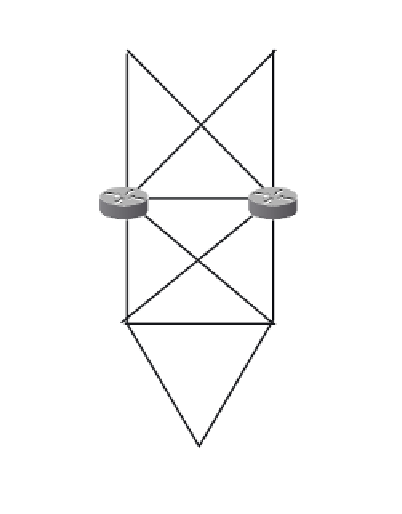Information Technology Reference
In-Depth Information
Figure 7-6
RR Clustering
Cluster
192.168.1.3
Client
Client
R1
R2
RR
RR
R3
R4
RR
RR
R6
R5
Cluster
192.168.1.1
Cluster
192.168.1.2
R7
Client
Loop-Prevention Mechanisms
It is important here to differentiate between two types of loops: routing information and
routing. With a routing information loop, the reachability information is received and
accepted by a router that has advertised the information. This type of loop is relevant to a
routing protocol, such as BGP. A routing information loop can cause suboptimal routing
and routing loops and can waste system resources. The routing information loop is the
primary concern here.
Routing loops, on the other hand, can directly affect the forwarding plane. A routing loop
occurs when a device receives the same packets that were originally transmitted from that
same device. Routing loops cause IP packets to be sent back and forth among two or more
devices, never reaching their final destination. These packets eventually are discarded when
TTL reaches 0.
With the easing of the iBGP loop-prevention requirement in the RR environment, there is
the potential to develop a routing information loop, which might or might not lead to a
routing loop. Figure 7-7 depicts such a configuration, in which three RRs are interconnected.
In this hypothetical topology, R3 is made a client of R4, R5 is made client of R3, and R4 is
made a client of R5. To alter the best-path selection, the default WEIGHT on R3 is changed
to 100 to prefer R4.






















